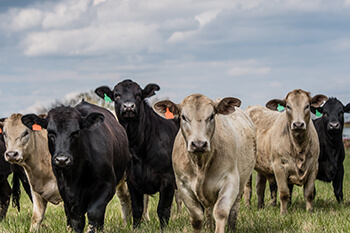Choosing a Cattle Mineral
Aug 26, 2019

Since most cow-calf operations rely primarily on pasture or forage, supplementing with free-choice minerals often provides a sizeable return on investment. With hundreds of products available, all touting various claims, selecting a mineral that best fits your operation can be confusing. Below are the top four factors to look at when choosing a mineral.
Co-op has a complete line of cattle minerals designed to meet these guidelines. Recent enhancements to our line make them the choice for supplementing cattle in the Southeast. Check with your local Co-op feed experts to determine the product best suited to your operation.
- Look for a supplement designed for your geographical region
- Ensure the mineral supplement you choose contains bioavailable sources
- Consider mineral supplements manufactured with a larger, more consistent particle size
- Regulate Intake
Co-op has a complete line of cattle minerals designed to meet these guidelines. Recent enhancements to our line make them the choice for supplementing cattle in the Southeast. Check with your local Co-op feed experts to determine the product best suited to your operation.